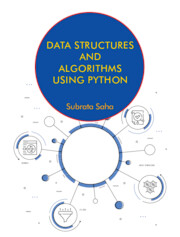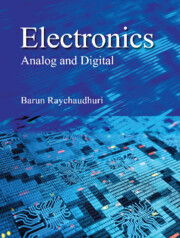Refine search
Actions for selected content:
37953 results in Cambridge Textbooks
20 - Peripheral Vascular Disease
- from Cardiovascular Conditions
-
-
- Book:
- The UKMLA Applied Knowledge Test
- Published online:
- 27 June 2025
- Print publication:
- 01 May 2025, pp 48-50
-
- Chapter
- Export citation
216 - Death and Dying
- from General Duties Presentations
-
-
- Book:
- The UKMLA Applied Knowledge Test
- Published online:
- 27 June 2025
- Print publication:
- 01 May 2025, pp 495-496
-
- Chapter
- Export citation
138 - Thyroid Nodules
- from Endocrine Conditions
-
-
- Book:
- The UKMLA Applied Knowledge Test
- Published online:
- 27 June 2025
- Print publication:
- 01 May 2025, pp 318-319
-
- Chapter
- Export citation
32 - Limb Claudication
- from Cardiovascular Presentations
-
-
- Book:
- The UKMLA Applied Knowledge Test
- Published online:
- 27 June 2025
- Print publication:
- 01 May 2025, pp 74-76
-
- Chapter
- Export citation
444 - Urinary Tract Calculi
- from Renal and Urology Conditions
-
-
- Book:
- The UKMLA Applied Knowledge Test
- Published online:
- 27 June 2025
- Print publication:
- 01 May 2025, pp 998-1000
-
- Chapter
- Export citation
443 - Urinary Incontinence
- from Renal and Urology Conditions
-
-
- Book:
- The UKMLA Applied Knowledge Test
- Published online:
- 27 June 2025
- Print publication:
- 01 May 2025, pp 996-998
-
- Chapter
- Export citation
Chapter 19 - A Human World
-
- Book:
- Earth History
- Published online:
- 29 April 2025
- Print publication:
- 01 May 2025, pp 376-392
-
- Chapter
- Export citation

Data Structures and Algorithms Using Python
-
- Published online:
- 30 April 2025
- Print publication:
- 15 June 2023
-
- Textbook
- Export citation

Electronics
- Analog and Digital
-
- Published online:
- 30 April 2025
- Print publication:
- 15 June 2023
-
- Textbook
- Export citation

Earth History
- Stories of Our Geological Past
-
- Published online:
- 29 April 2025
- Print publication:
- 01 May 2025
-
- Textbook
- Export citation

Introducing Translation
-
- Published online:
- 29 April 2025
- Print publication:
- 22 May 2025
-
- Textbook
- Export citation
10 - Detecting a relationship
- from Part 5 - Evaluating
-
- Book:
- Introduction to Epidemiology for the Health Sciences
- Published online:
- 28 May 2025
- Print publication:
- 24 April 2025, pp 280-314
-
- Chapter
- Export citation
6 - Measuring exposure and the outcome together
- from Part 4 - Problem-solving
-
- Book:
- Introduction to Epidemiology for the Health Sciences
- Published online:
- 28 May 2025
- Print publication:
- 24 April 2025, pp 160-188
-
- Chapter
- Export citation
5 - Describing the problem
- from Part 3 - Reasoning
-
- Book:
- Introduction to Epidemiology for the Health Sciences
- Published online:
- 28 May 2025
- Print publication:
- 24 April 2025, pp 121-158
-
- Chapter
- Export citation
8 - Starting with exposure
- from Part 4 - Problem-solving
-
- Book:
- Introduction to Epidemiology for the Health Sciences
- Published online:
- 28 May 2025
- Print publication:
- 24 April 2025, pp 217-244
-
- Chapter
- Export citation
7 - Starting with the outcome
- from Part 4 - Problem-solving
-
- Book:
- Introduction to Epidemiology for the Health Sciences
- Published online:
- 28 May 2025
- Print publication:
- 24 April 2025, pp 189-216
-
- Chapter
- Export citation
2 - Talking like an epidemiologist
- from Part 2 - Analysing
-
- Book:
- Introduction to Epidemiology for the Health Sciences
- Published online:
- 28 May 2025
- Print publication:
- 24 April 2025, pp 34-59
-
- Chapter
- Export citation
Answers
-
- Book:
- Introduction to Epidemiology for the Health Sciences
- Published online:
- 28 May 2025
- Print publication:
- 24 April 2025, pp 388-410
-
- Chapter
- Export citation
3 - Making comparisons
- from Part 2 - Analysing
-
- Book:
- Introduction to Epidemiology for the Health Sciences
- Published online:
- 28 May 2025
- Print publication:
- 24 April 2025, pp 60-92
-
- Chapter
- Export citation
Part 1 - Thinking like an epidemiologist
-
- Book:
- Introduction to Epidemiology for the Health Sciences
- Published online:
- 28 May 2025
- Print publication:
- 24 April 2025, pp 1-32
-
- Chapter
- Export citation
